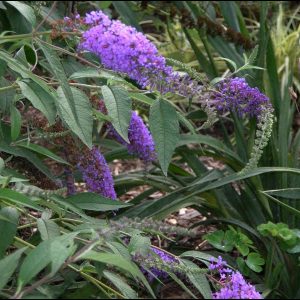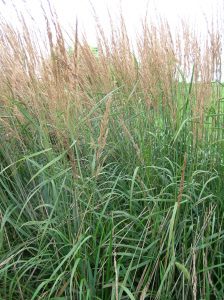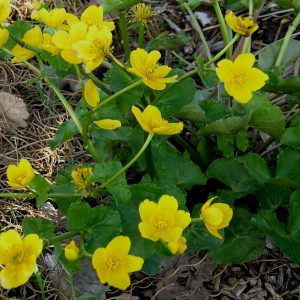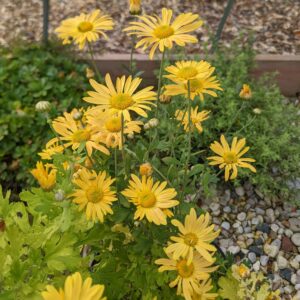Deer Resistant Plants
Showing 33–40 of 163 results
-
Buddleja davidii Butterfly bush, Summer lilac, do ye zui cao in China Z 5-9
Fragrant, large, lilac to purple arching spikes from mid-summer through fall
OUT OF STOCK
Fragrant, large, lilac to purple arching spikes from mid-summer through fall
Can not ship to: Delaware, Maryland, North Carolina, Oregon, Pennsylvania, Tennessee and Washington
Size: 6' x 4'
Care: Sun in well-drained soil.
Native: Sichuan & Hubei provinces, China
Wildlife Value: flowers very fragrant, attracts many butterflies, excellent cut flower
Awards: Royal Horticultural Society Award of Garden Merit.Buddleja named to honor Reverend Adam Buddle, Vicar of Farmbridge in Essex and botanist. (1662-1715) Davidii honors Fr. Armand David a French missionary who noticed it. Introduced to gardens by another French missionary Jean Soulie (1858-1905). Soulie made dangerous expeditions to the Tibetan border of China and ultimately lost his life when he was tortured and shot in 1905. This species 1st sent to the West (Kew Gardens) by Dr. Ernest Henry who found it near Ichang in 1887. Irishman Dr. Henry worked as a customs officer in Shanghai and an assistant physician in Ichang.
-
Calamagrostis brachytricha Diamond grass, Feather reed grass Z 4-9
Extraordinary, voluptuous plumes with pink caste, September to November, much underused. One of internationally known garden designer Piet Oudolf’s 100 “MUST HAVE” plants, Gardens Illustrated 94 (2013)
Extraordinary, voluptuous plumes with pink caste, September to November, much underused. One of internationally known garden designer Piet Oudolf’s 100 “MUST HAVE” plants, Gardens Illustrated 94 (2013)
Size: 4' x 30"
Care: Full sun to part shade in moist to moist well-drained soil.
Native: East Asia
Awards: England’s Royal Horticultural Society Award of Merit & Great Plants for Great PlainsDescribed in 1854 in Synopsis Plantarum Glumacearum.
-
Calamagrostis x acutiflora”Karl Forester” Feather reed grass
Completely, reliably erect grass - winner perennial plant of year award 2001.
Completely, reliably erect grass – winner perennial plant of year award 2001.
Size: 3-5' x 2'
Care: sun to part shade in moist to moist well-drained soil. Cut back in late winter.
Awards: Perennial Plant Association Plant of the Year 2001This is a natural cross of Calamagrostis epigeos and Calamagrostis arundinacea, natives of Asia and Europe. German nurseryman Karl Forester’s (1874-1970) keen eye spotted this in the Hamburg Botanic Garden. He listed this in his nursery catalog in 1939. Under Nazi domination he risked it all by keeping Jewish friends & workers. After WW II his nursery was the only perennial supplier in East Germany. This grass sent from Denmark to the US in 1964.
-
Caltha palustris Marsh marigold, Kingscup Zones 3-7
Finch yellow buttercups in early spring over round, kidney-shaped foliage
Finch yellow buttercups in early spring over round, kidney-shaped foliage
Size: 12-16” x 12-16”
Care: sun to part shade in moist, acidic soil
Native: Canada to No. Dakota, S to TN, Wisconsin native
Wildlife Value: attracts bees and hummingbirds for nectar. Deters deer – leaves contain mild poison.Caltha is Latin meaning cup and palustris means boggy or marsh. America’s 1st people used the roots medicinally to cure colds and sores and to induce vomiting. The roots also protected against “love charms,” but I suspect vomiting might have done that. An infusion of leaves remedied constipation. Believed to have grown as long ago as the Ice Age. Introduced to Europe very early and memorialized in Chaucer’s poetry, 1549. First described by French botanist Joseph Tournefort c 1700. Grown in the Eichstatt Garden of Prince-bishop Johann Konrad von Gemmingen in Bavaria c. 1600. William Robinson described them as “shin(ing) like fires in swamps and hollows.” Pressed specimen in Emily Dickinson’s herbarium.
-
Campanula rotundifolia Harebell, Bluebell of Scotland Z 3-8
Its delicate appearance conceals its hardy constitution. Dainty bluish-lilac bells to 12” stems on bushy round ground-hugging foliage. Blooms from June to October and occasionally November. Perfect for rock gardens and borders.
OUT OF STOCK
Its delicate appearance conceals its hardy constitution. Dainty bluish-lilac bells to 12” stems on bushy round ground-hugging foliage. Blooms from June to October and occasionally November. Perfect for rock gardens and borders.
Size: 9-12" x 12"
Care: Sun to part shade in moist well-drained soil
Native: Europe, Siberia and North America, including Wisconsin
Wildlife Value: Walnut and deer tolerantLakota ate the leaves raw and cooked and made an infusion of the roots to remedy earaches. Sir Walter Scott immortalized the Bluebell of Scotland in Lady of the Lake. Also a subject of Emily Dickinson’s poetry.
-
Centaurea atropurpurea Red knapweed Z 5-9
Ruby-red to merlot, soft thistle-like blooms June-August, if deadheaded, atop silvery, deep cut foliage, rare.
OUT OF STOCK
Ruby-red to merlot, soft thistle-like blooms June-August, repeating if deadheaded, atop silvery, deep cut foliage, rare.
Size: 4’ x 2’
Care: sun in moist well-drained to well-drained soil
Native: meadows of Carpathian mountains
Wildlife Value: Deer resistantCentaurea named for the Centaur, half-horse and half-man who was a mythical healer. Red knapweed described by French entomologist Guillaume Antoine Olivier (1756-1814). Grown at America’s 1st botanic garden, Elgin Botanic Garden 1811.
-
Chrysanthemum x rubellum ‘Mary Stoker’ Z 4-9
Sprays of large, single warming yellow daisies, blushed with apricot top a bushy mound of light green leaves, Blooms late-summer to late-fall
OUT OF STOCK
Sprays of large, single warming yellow daisies, blushed with apricot top a bushy mound of light green leaves, blooms late-summer to late-fall
Size: 1-2’ x 2-3’ and spreading
Care: Full sun to part shade, tolerates normal, sandy or clay soil
Wildlife Value: Attracts bees, butterflies and birds. Deer resistant.One of the rubellum hybrids, Hybridized in the 1930’s
-
Cleome serrulata Rocky Mountain Beeweed, Spiderflower, Stinkweed Reseeding annual
Blooming all summer dozens of rose to lilac-colored flowers bunch together at the top of the 3-4” tall stem seemingly one soft-ball sized flower. Thread-thin stamens protrude above the flowers, each flower bearing six stamens, 72, for example, if the cluster contains a mere dozen individual flowers earning it the nickname spider flower. Short leaves grow the length of plant stems, from bottom to top, bare of flowers. A trio of leaflets to each leaf, one as a leader with two sidekicks.
OUT OF STOCK – EMAIL FOR AVAILABILITY
Blooming all summer dozens of rose to lilac-colored flowers bunch together at the top of the 3-4” tall stem seemingly one soft-ball sized flower. Thread-thin stamens protrude above the flowers, each flower bearing six stamens, 72, for example, if the cluster contains a mere dozen individual flowers earning it the nickname spider flower. Short leaves grow the length of plant stems, from bottom to top, bare of flowers. A trio of leaflets to each leaf, one as a leader with two sidekicks.
Size: 4' x 9"
Care: sun in moist-well drained to dry soil, drought tolerant
Native: Minnesota west to the Pacific, south to Arizona and New Mexico and all in between.
Wildlife Value: So many flowers, each with nectar and a hoard of stamens each holding pollen in a soft-ball sized object makes this a mecca for pollinators of all sorts, numerous bee species, wasps and several butterflies. When it’s done flowering birds eat its seeds. Its skunk-like odor (Stinkweed) has one advantage – it keeps the deer away.An ancient, pre-historic plant, Natives including Lakota, Zuni, Tewa, Navajo, and Pueblo found many uses for this Cleome. Some ate shoots, leaves, seeds or flowers, cooked them, or ate them raw alone or together with other food. Tewa grew this with corn, beans and squash to attract pollinators to pollinate the food plants. Infusions treated fever, and stomach aches. A poultice treated sore eyes. Lakota used this and a shrub to trap bison. Navajo color rugs with a yellow-green dye they make from Cleome. Pueblo Indians concentrate Cleome to make a thick, black paste to decorate baskets and pottery. Meriwether Lewis collected three of these two on the way west and one homebound traveling east.







